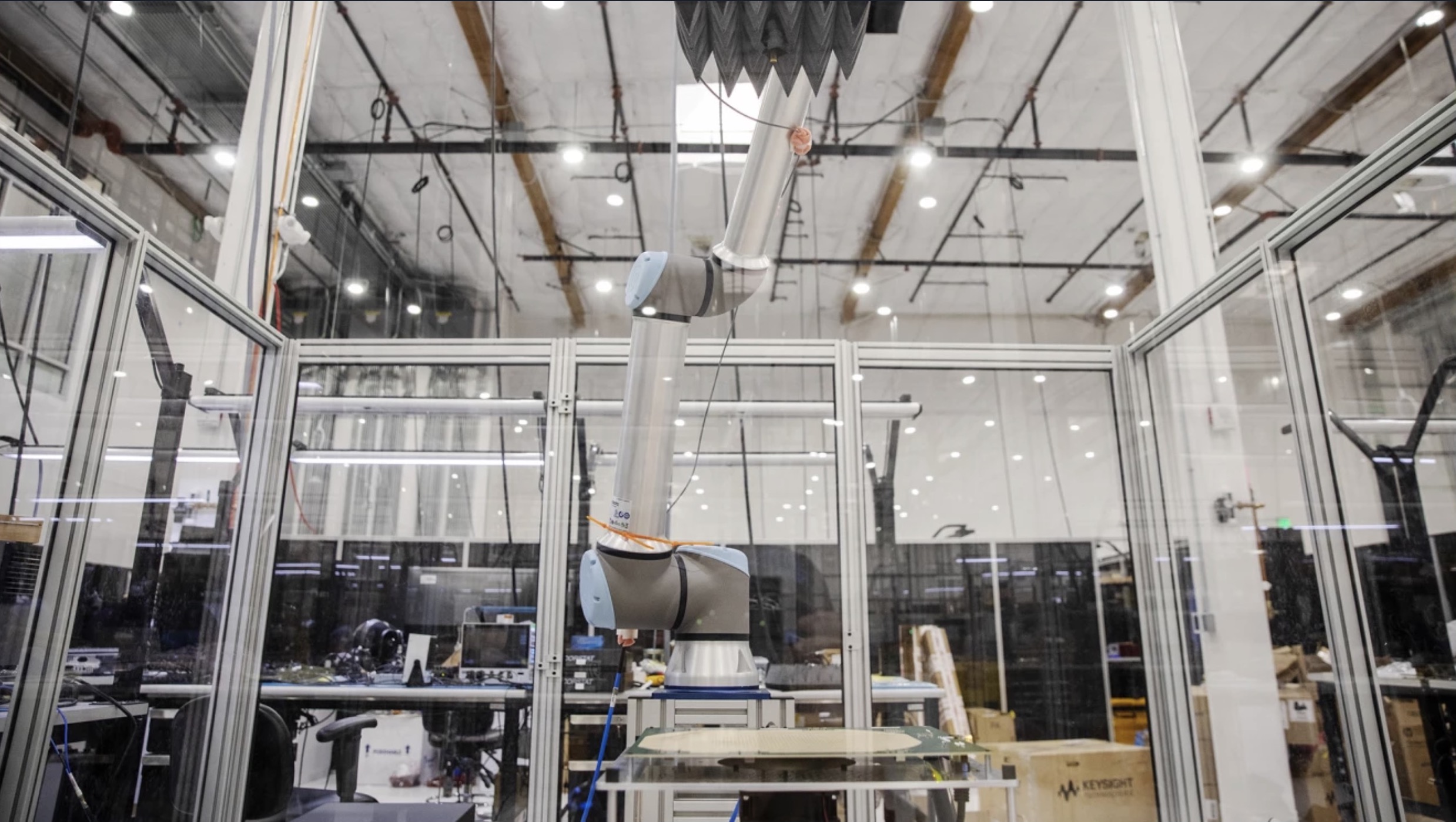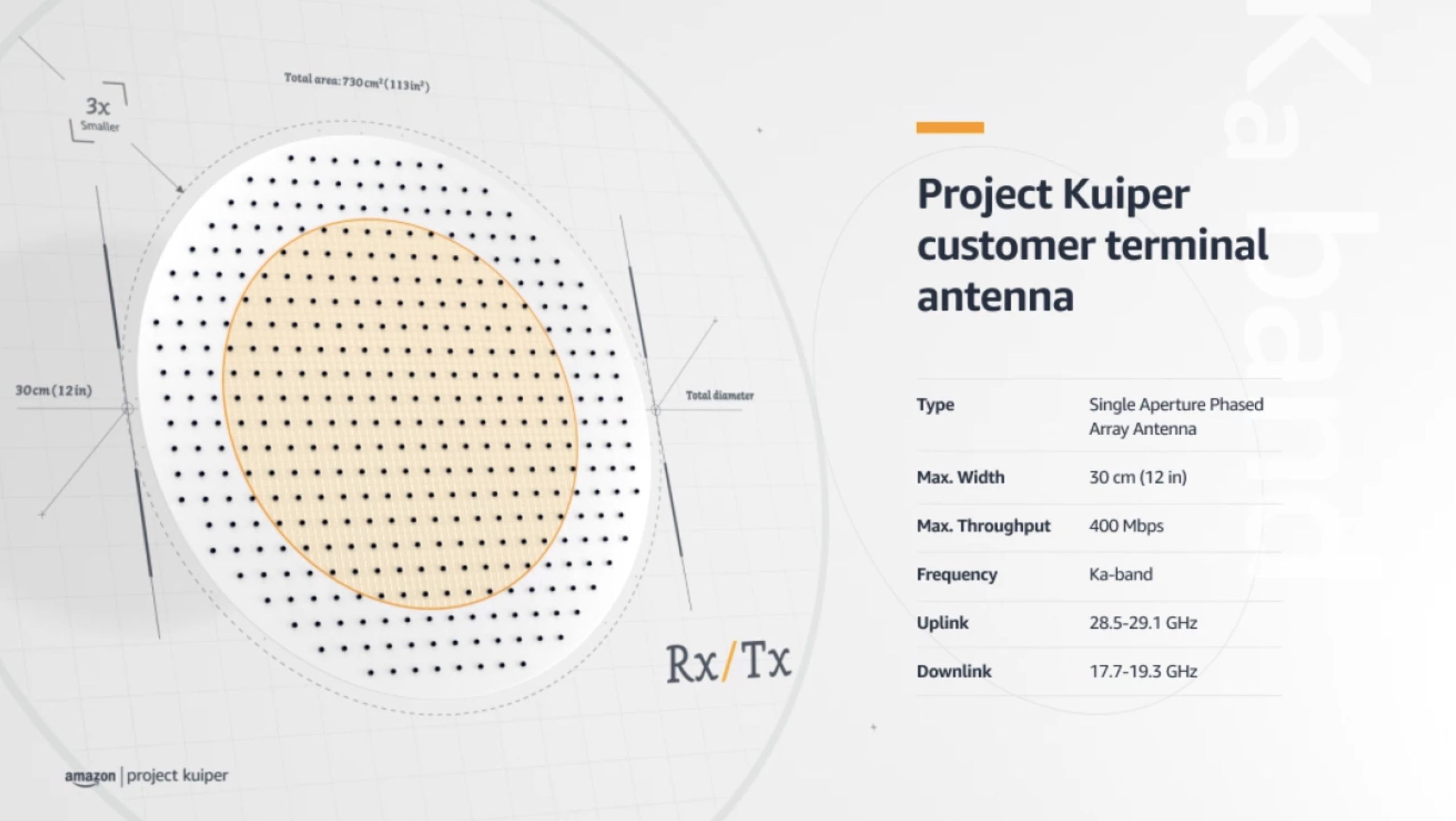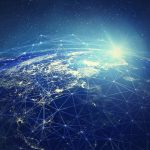Amazon's competitor to SpaceX Starlink is moving through the prototype-development phase, with the company announcing yesterday that it has "completed initial development on the antenna for our low-cost customer terminal."
Amazon said its "Ka-band phased-array antenna is based on a new architecture capable of delivering high-speed, low-latency broadband in a form factor that is smaller and lighter than legacy antenna designs" and the "prototype is already delivering speeds up to 400Mbps." Performance will get better in future versions, Amazon said.
Amazon in July received Federal Communications Commission approval to launch 3,236 low-Earth orbit satellites. The company says it plans to invest over $10 billion in its satellite-broadband division, which it calls Project Kuiper.
Ka-band antennas
To reduce production costs, Amazon said it must "decrease the size, weight, and complexity" of the antenna. But this is difficult with Ka-band equipment, which needs "more physical separation between transmit and receive antennas to cover its wide frequency range," Amazon said. "For this reason, legacy Ka-band antennas place the transmit antenna and receive antenna next to one another, requiring a larger surface area and increasing production costs."
Amazon said its solution is to use "tiny antenna element structures to overlay one over the other. This has never been accomplished in the Ka-band... Our design uses a combination of digital and analog components to electronically steer Ka-band beams toward satellites passing overhead." This method let Amazon create a "single aperture phased array antenna that measures 12 inches in diameter, making it three times smaller and proportionately lighter than legacy antenna designs," the company said.

FCC filings said that Amazon's satellite plan calls for using frequencies of 17.7-18.6GHz and 18.8-20.2GHz for space-to-Earth communications, and 27.5-30.0GHz for Earth-to-space transmissions.
Antenna “passed all” tests
Amazon said it has tested the prototype with a geostationary satellite, though it will use low-Earth satellites when it eventually offers broadband to customers.




 Loading comments...
Loading comments...
